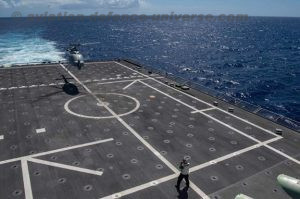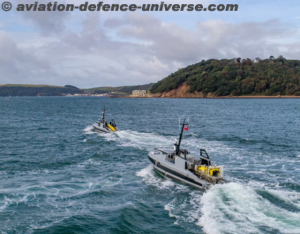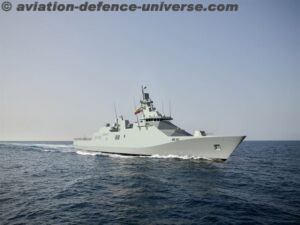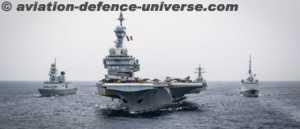- Autonomous capability will provide wide area distributed maritime operations in the Pacific through its onboard sensors and integration with manned assets
San Diego. 31 May 2022. Northrop Grumman Corporation’s MQ-8C Fire Scout, the U.S. Navy’s autonomous, runway-independent helicopter system, made its second operational deployment, and first deployment to the Indo-Pacific Area of Responsibility aboard USS Jackson (LCS-6) providing military commanders greater maritime intelligence, surveillance, reconnaissance and targeting (ISR&T) capability.
“The MQ-8C Fire Scout is an extremely flexible unmanned aerial system and a pillar in the Navy and Marine Corps unmanned campaign plan,” said Capt. Dennis Monagle, U.S. Navy. “While Fire Scout will still be active on remaining littoral combat ships, the system is being built into the Constellation-class frigate design, most notably the USS Constellation (FFG-62), as well as other ship classes.”

MQ-8C Fire Scout continues to deploy on littoral combat ships with future deployments planned on Constellation-class guided-missile frigates and operations from shore sites under the Expeditionary Advance Base Operations concept, including potential logistics cargo role. Other potential future roles for the MQ-8C include mine countermeasures and anti-submarine warfare.
“The MQ-8C Fire Scout’s initial deployment was aboard USS Milwaukee (LCS-5) in the Caribbean Sea,” said Lance Eischeid, director, Fire Scout program, Northrop Grumman. “MQ-8C Fire Scout provided increased maritime intelligence, surveillance, reconnaissance and targeting (ISR&T) capability that contributed greatly to the success of the U.S. Navy’s counter-narcotics operations.”
In addition to providing critical decision-making, MQ-8C Fire Scout is supporting advanced capabilities including demonstrating manned-unmanned teaming (MUMT), enabling sensor information sharing across a distributed force, further increasing survivability, reducing risk to and burden on manned aircraft, and enhancing weapons capacity. Fire Scout is furthering the successful integration of unmanned platforms and manned assets at sea.
With Fire Scout’s ability to operate at extended ranges required for future warfighting activities, the autonomous helicopter system provides responsive, reliable, and real-time surveillance capabilities and operates from both air-capable ships and developed or austere landing zones.


































































































































